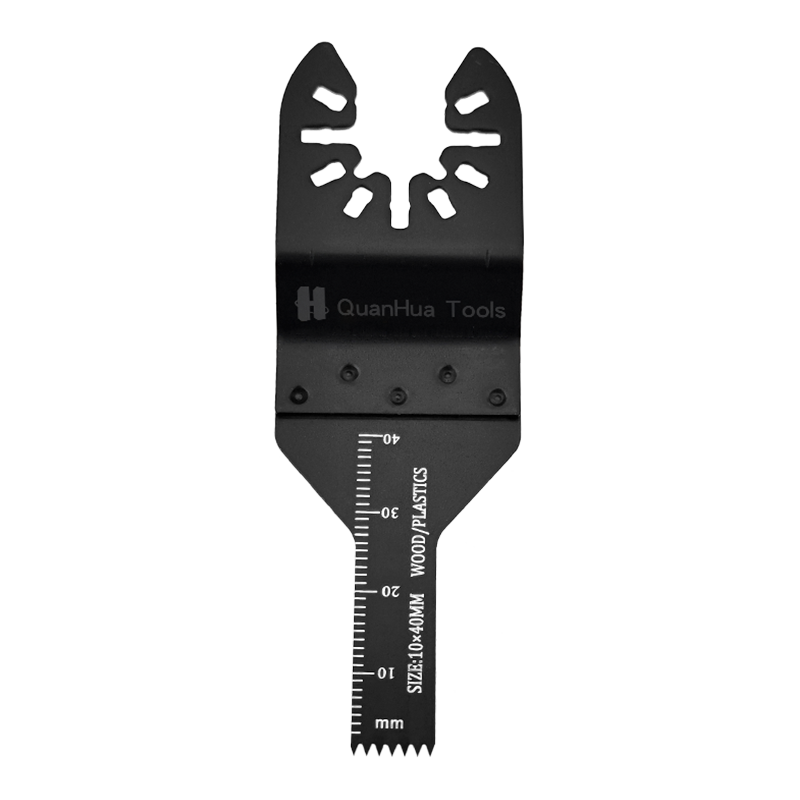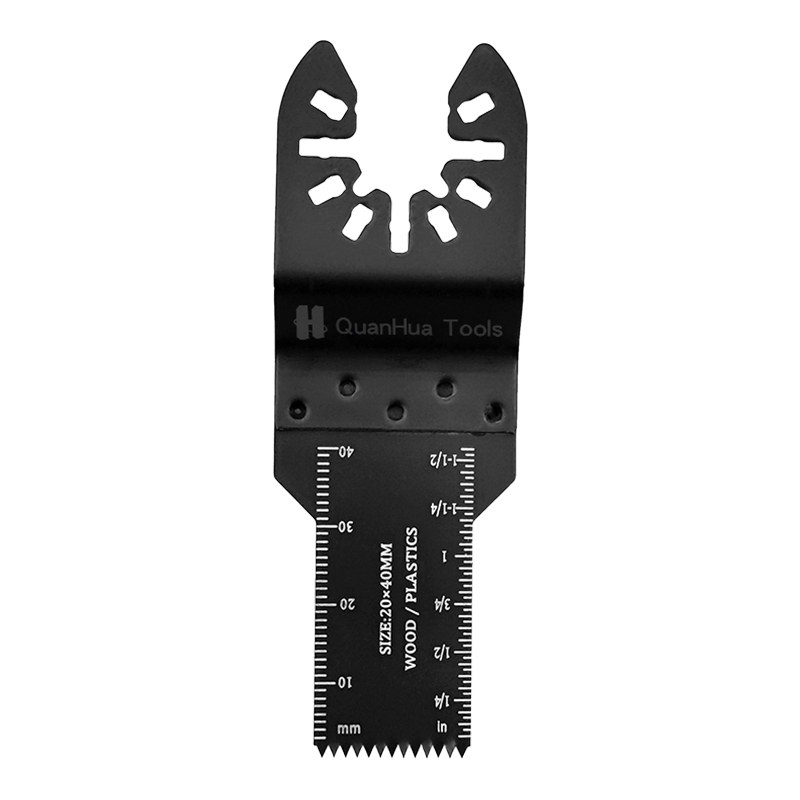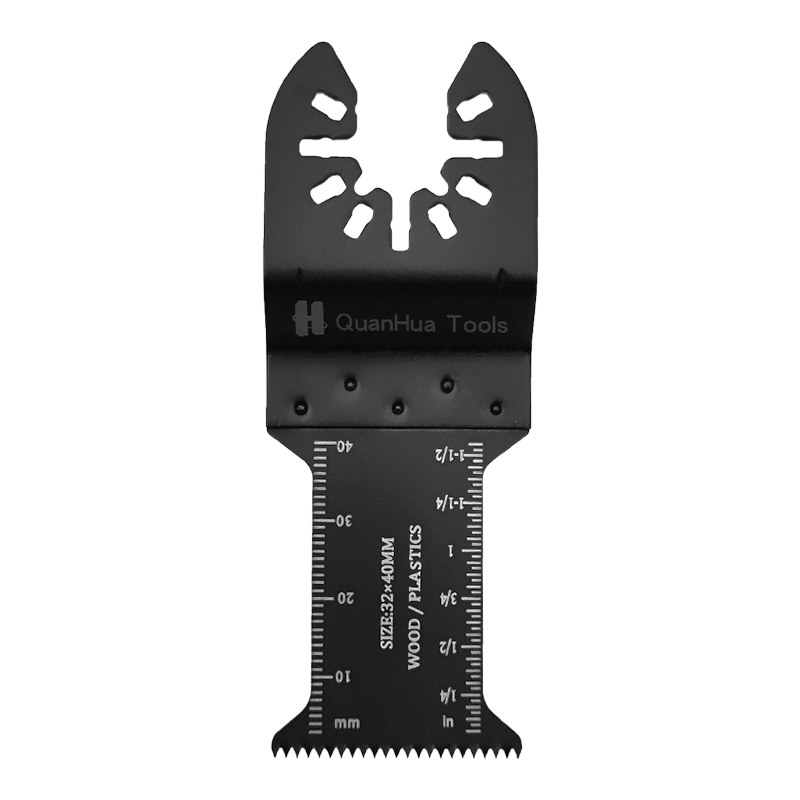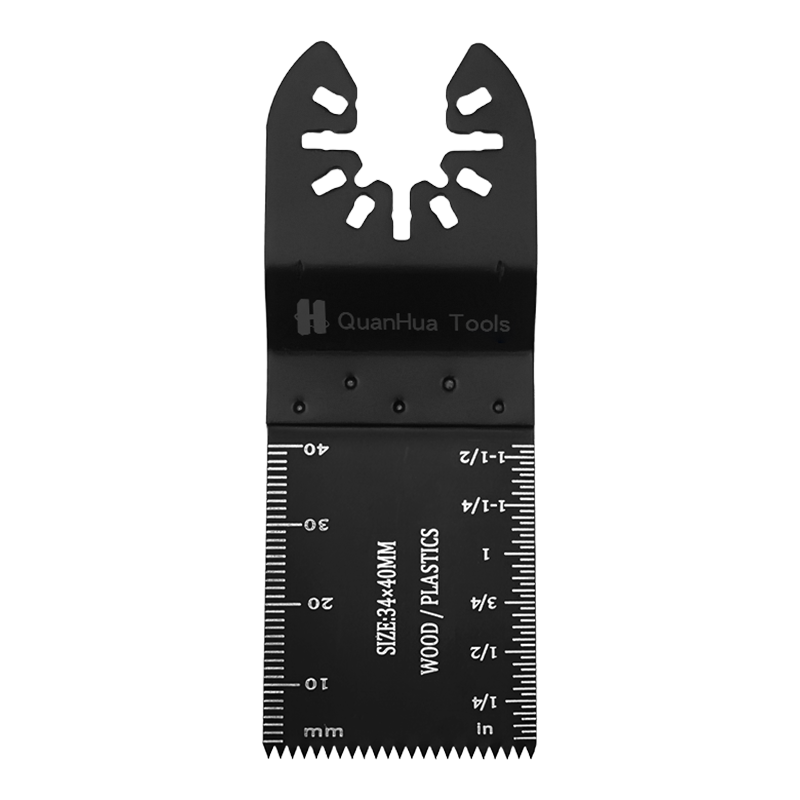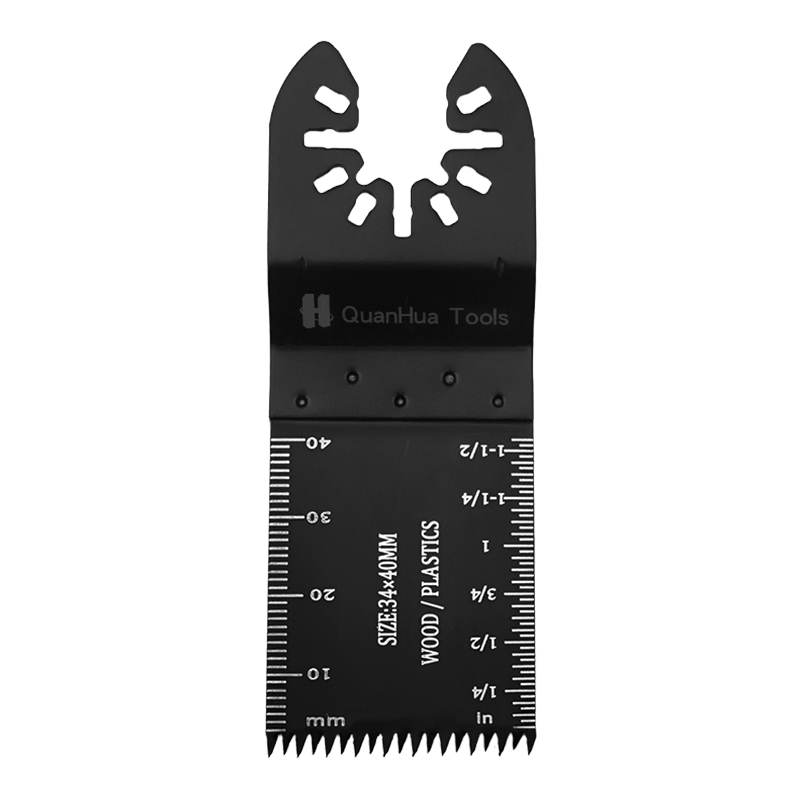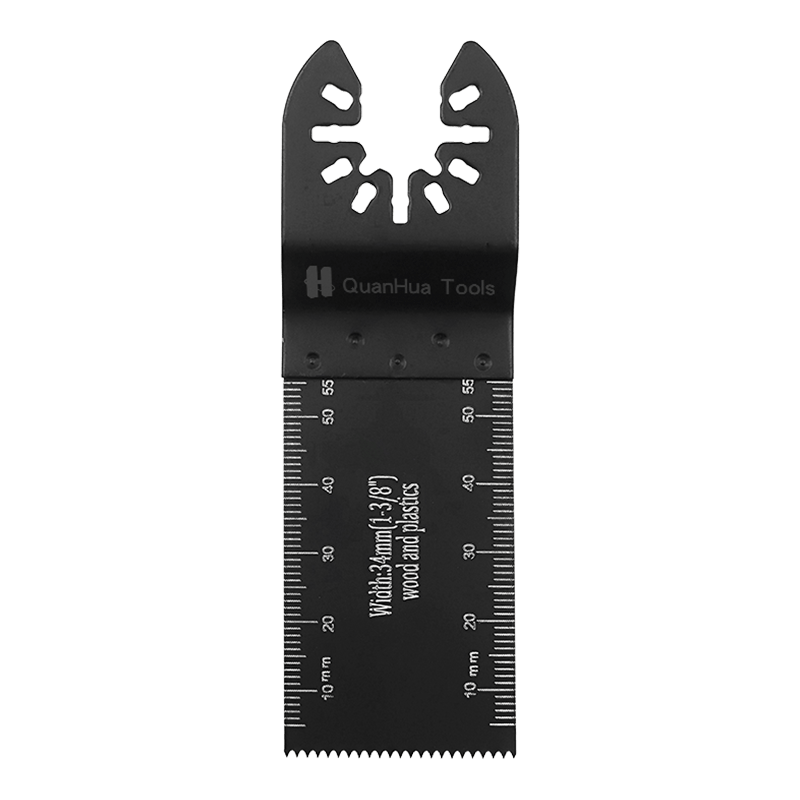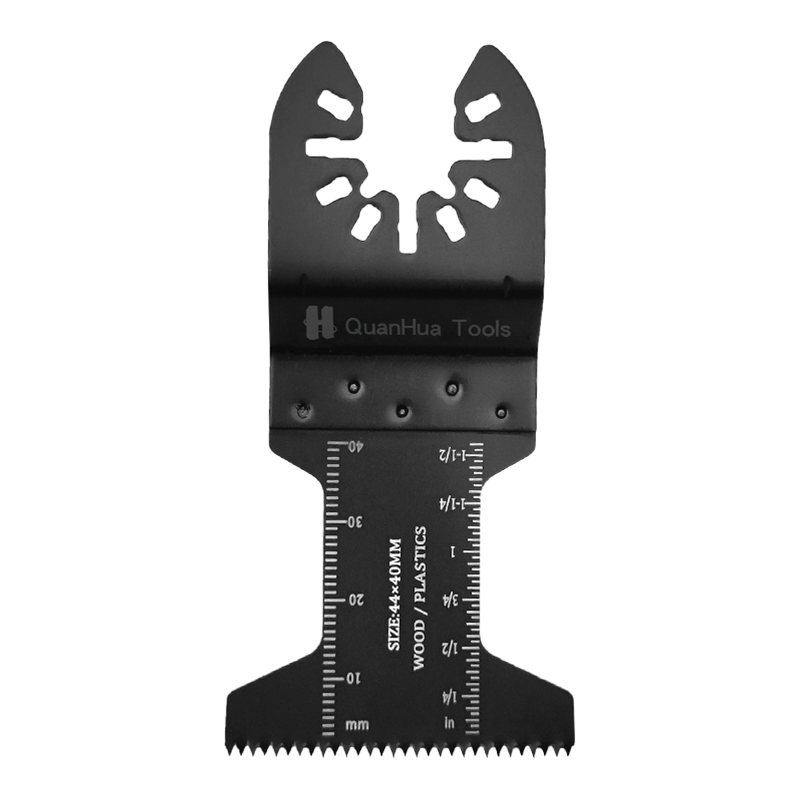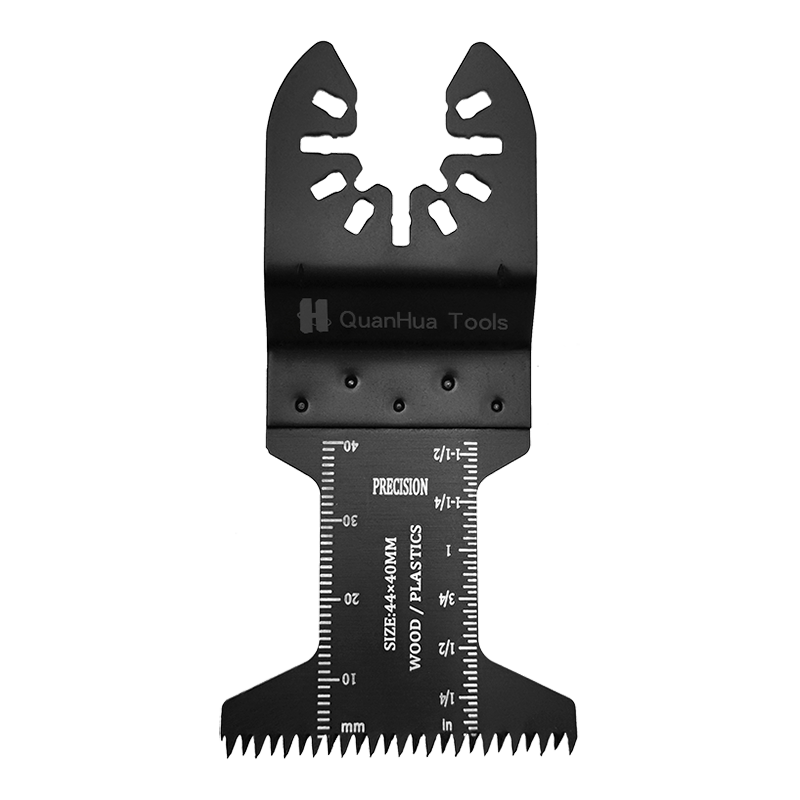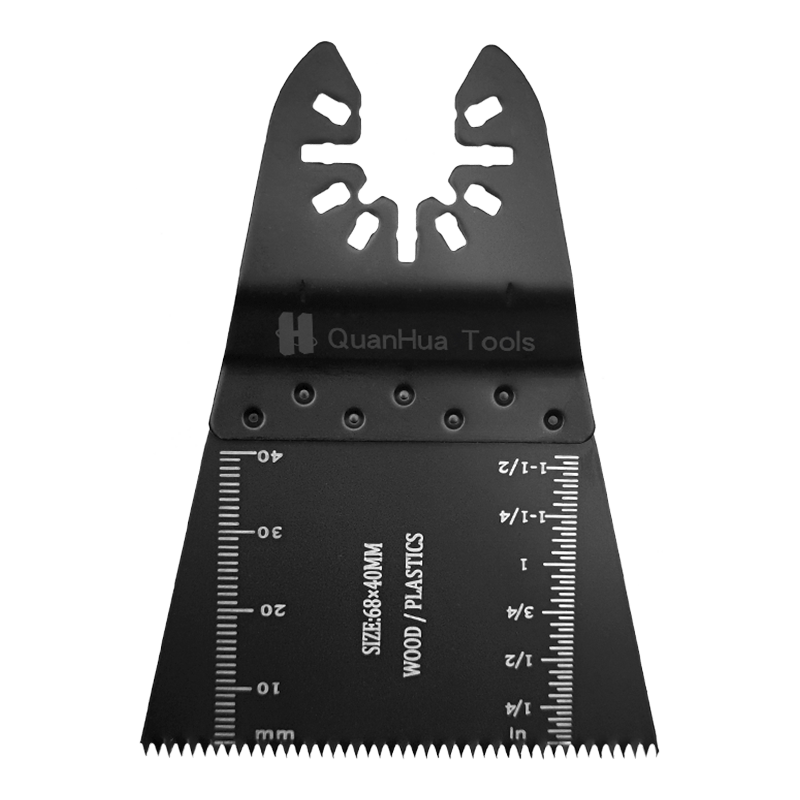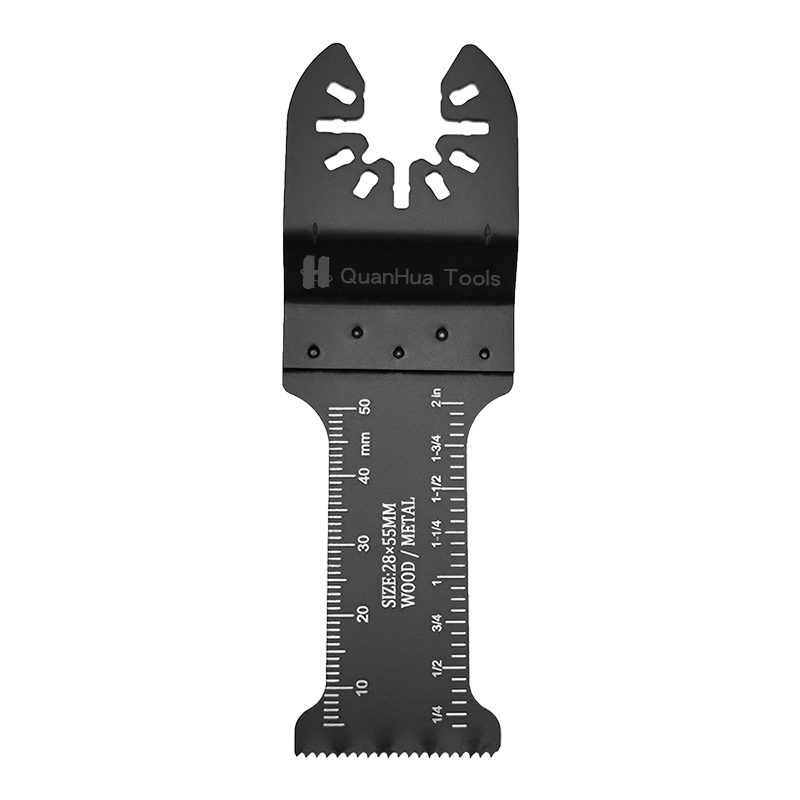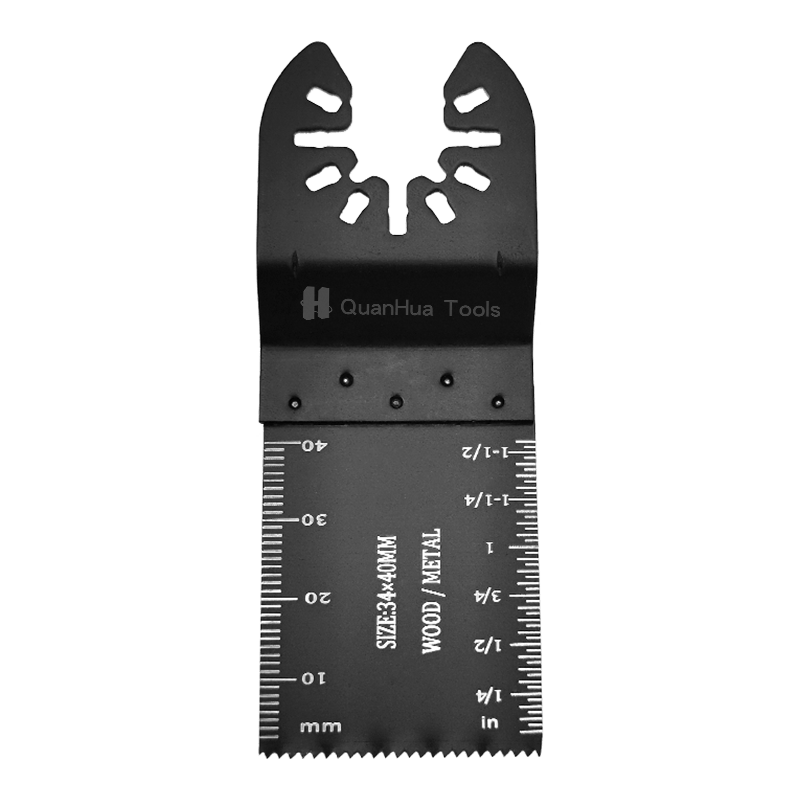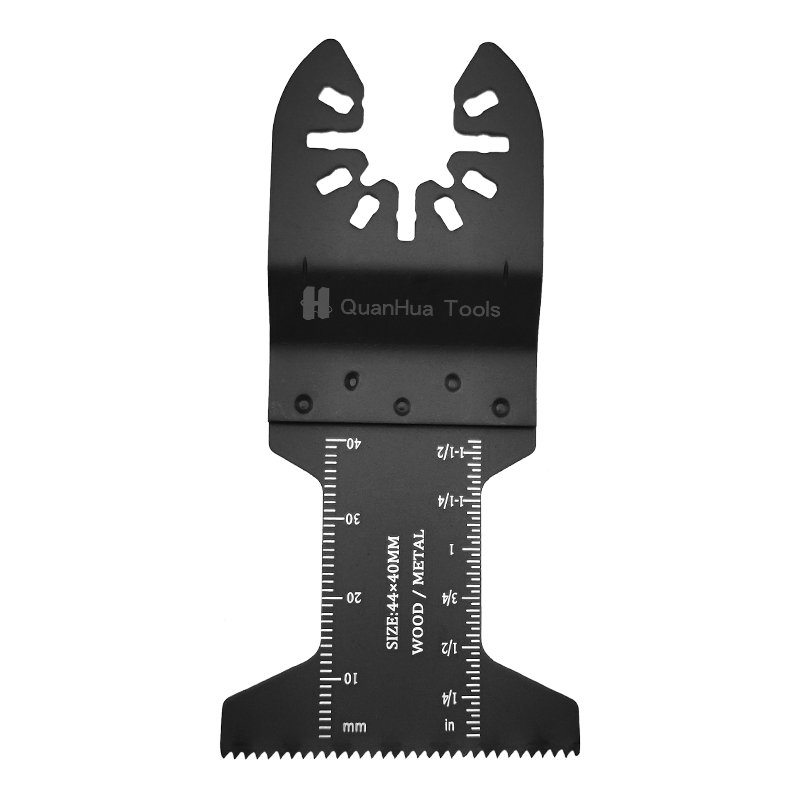Oscillating Multitool Saw Blade Kits is popular in woodworking, decoration, metal processing and even auto repair fields due to its advantages such as low vibration, wide application and replaceable saw blade. No matter how good the tool is, if it is used improperly, it will not only affect efficiency but also cause safety hazards.
1. Preparation before use
1. Choose the right saw blade
Depending on the different working materials and work requirements, it is crucial to choose the right saw blade:
Wood cutting: It is recommended to use a saw blade made of high carbon steel (HCS) with a larger pitch (such as 10~15 TPI), which is more suitable for fast cutting of cork, plywood, etc.
Metal cutting: Bi-Metal or high speed steel (HSS) saw blades should be used, with a denser pitch, suitable for cutting nails, small diameter pipes or thin steel plates.
Plastic/PVC: Use a standard HCS saw blade, pay attention to control the cutting speed to avoid melting the material.
Hard materials (ceramic tiles, glass, concrete): Use diamond or tungsten carbide coated saw blades, which are wear-resistant and high temperature resistant.
Scraping purposes (such as floor glue, cement stains, sealants): Choose a wide-edged, shovel-type scraper saw blade for efficient scraping.
2. Install and check the saw blade
Make sure the saw blade matches the tool interface (such as OIS standard, Starlock interface, etc.). Most tools support multiple standards;
When inserting the saw blade, check whether it is stuck in the correct position and tighten or lock it firmly;
After installation, short-press the start button to ensure that the saw blade does not shake or deflect.
3. Wear appropriate protective equipment
Goggles: prevent metal chips and wood chips from splashing into the eyes;
Earmuffs or earplugs: reduce hearing damage during long-term operation;
Dust mask: very important when cutting glue, stone or old paint;
Gloves: It is recommended to use non-slip gloves with certain cutting protection capabilities to enhance grip and safety.
2. Operation skills and efficiency improvement suggestions
1. Pre-marking and precise cutting
Use a pencil or knife to mark the cutting line on the surface of the material;
If you need to cut longer or more complex shapes, you can use a ruler or template as an auxiliary;
This not only improves accuracy, but also reduces errors caused by "hand shaking".
2. Start at a low speed and gradually increase the speed
Most oscillating saws are equipped with variable speed control.
Beginners or those who are unsure of the hardness of the material should start at the lowest gear.
When the hand feel is stable, gradually increase the speed to improve efficiency.
3. Control the force and do not press hard.
Multi-function oscillating saws rely on subtle swings of tens of thousands of times per minute to cut, rather than the push and pull of traditional saw blades.
When cutting, the tool should be gently pushed forward to allow the saw blade to "eat the material" naturally.
Excessive pressure may cause the saw blade to overheat, damage, or even damage the motor.
4. Clean the saw blade to extend its service life.
After each use, use a brush or compressed air to clean the residue in the gap of the saw blade.
If the saw blade is stained with glue or paint, it can be wiped with glue remover or alcohol.
Regularly check whether the saw teeth are blunt or deformed, and replace them in time to maintain the cutting effect.
5. Utilize angle flexibility
Multi-function saws can be operated in narrow spaces and corners, which is one of their biggest advantages;
Use different angles to "tentatively" cut in, which is particularly suitable for trimming, grooving or opening holes from the middle;
For example, when cutting the floor gap under the door frame, the saw blade can be operated horizontally on the ground, saving time and effort.
III. Safety operation instructions (extremely important)
1. Be sure to turn off the power when replacing the saw blade
Whether it is plug-in or battery type, the power supply/battery should be unplugged before replacing the saw blade;
The saw blade has a sharp edge and has a certain degree of elasticity. Improper operation may cut your fingers.
2. Keep away from flammable materials
Sparks may be generated during metal cutting;
Do not place flammable liquids such as gasoline, alcohol, turpentine, etc. in the operation area;
Especially at the construction site, the workbench or ground should be cleaned in advance.
3. Avoid long-term continuous high-load use
After the tool runs for 15 to 30 minutes, the motor should be allowed to "rest" for a few minutes;
Overheating will not only damage the saw blade, but may also burn the motor and reduce battery life;
If you feel that the tool is overheated, you should stop immediately and continue after cooling.
4. Good ventilation, especially during scraping work
Such as scraping old tile glue, paint, sealant, etc., it is often accompanied by dust, odor and even harmful gases;
It should be operated in a well-ventilated environment, or used with an industrial vacuum cleaner;
When used indoors, you can open windows + fans to enhance air circulation.

